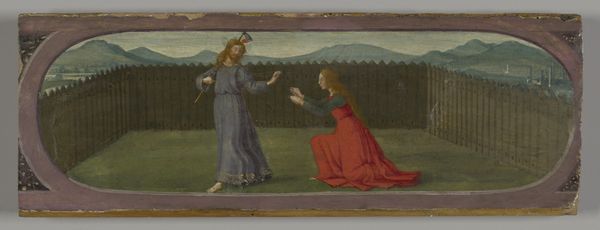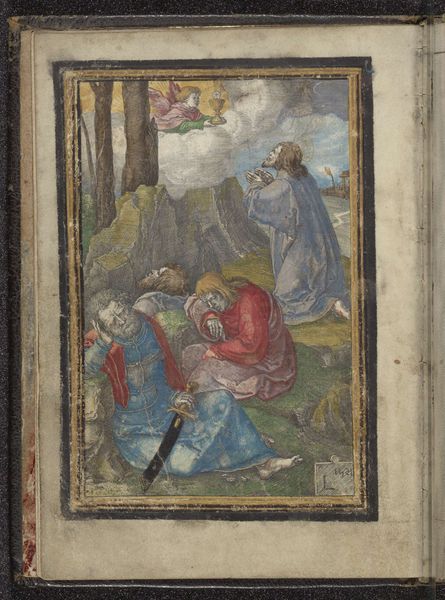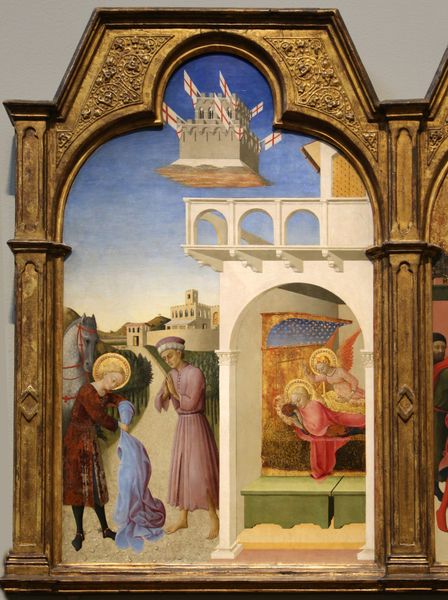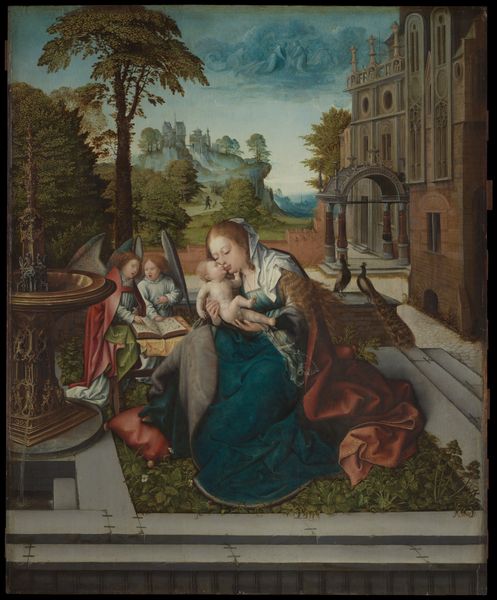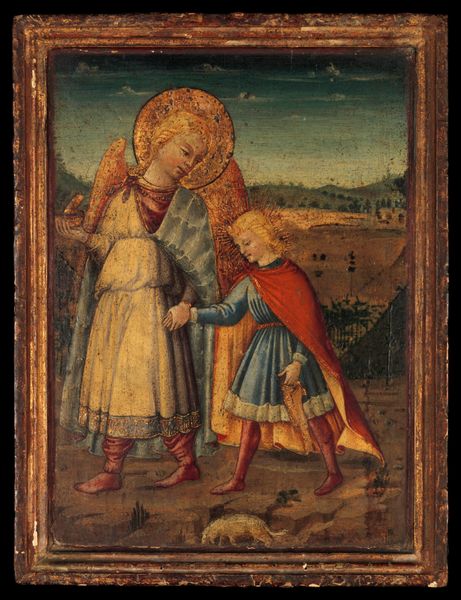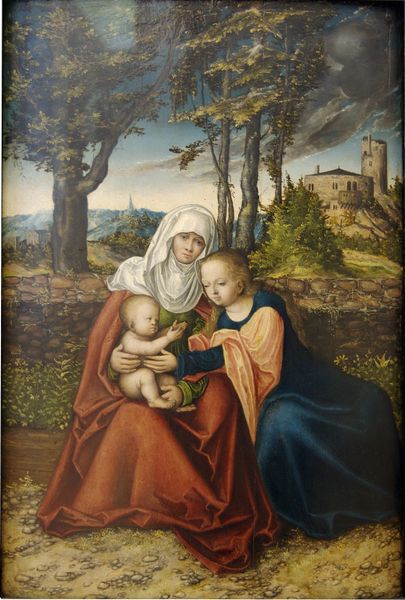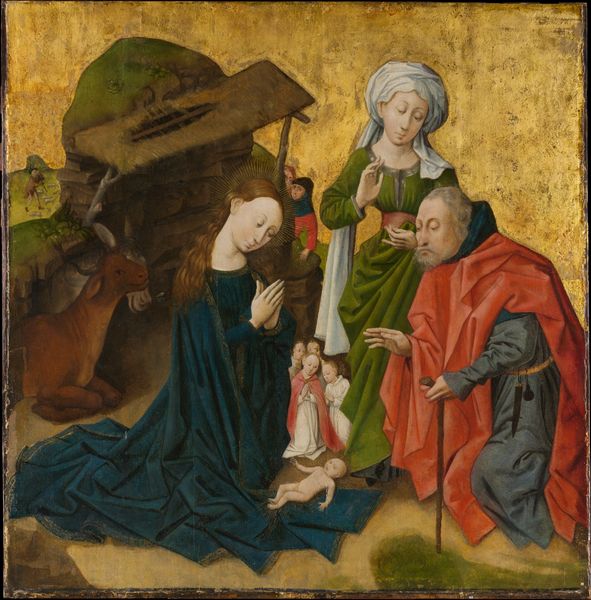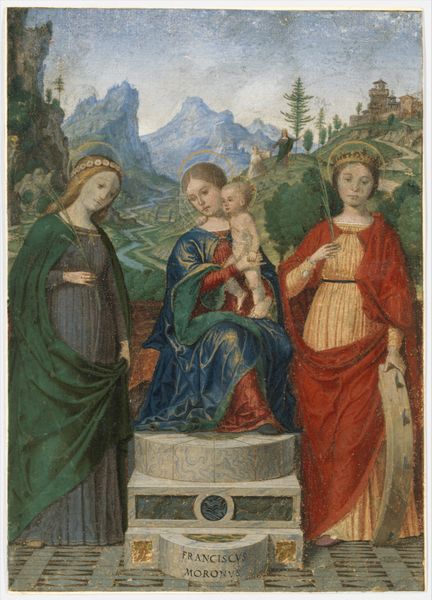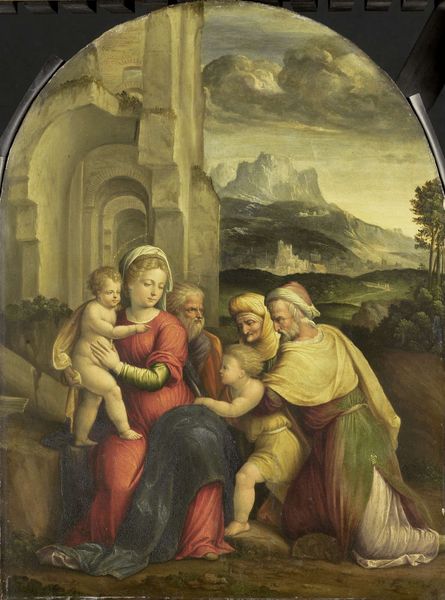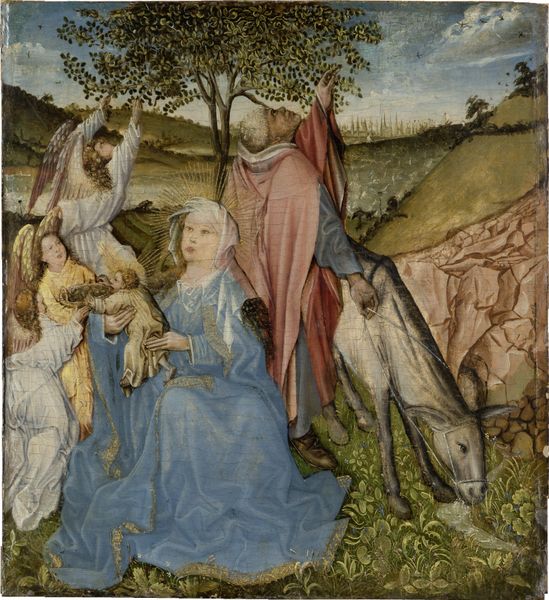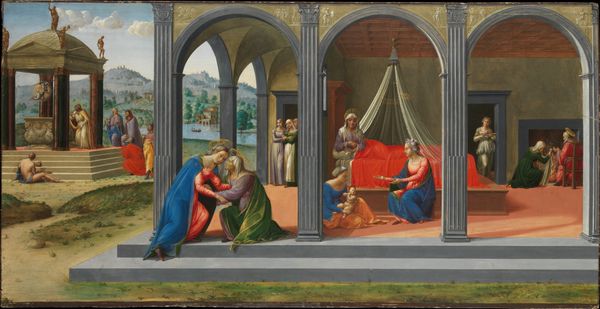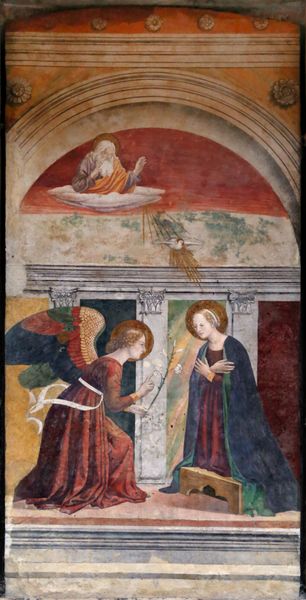
panel, tempera
#
gouache
#
panel
#
narrative-art
#
tempera
#
landscape
#
figuration
#
oil painting
#
history-painting
#
italian-renaissance
#
early-renaissance
Copyright: Public domain
Curator: This tempera on panel, titled "Agony in The Garden," is attributed to Francesco Botticini and presents a rather compelling scene. The linear perspective, while present, feels almost flattened, and there’s a dreamlike quality to the landscape. Editor: My immediate impression is one of quiet despair. The figures are so still, so withdrawn, against this idyllic, yet somewhat unsettling, backdrop. The colors, though muted, evoke a palpable sense of sorrow. Curator: Let's consider Botticini’s workshop practices here. Tempera, requiring careful layering and egg-based binder, suggests a meticulous and time-consuming production process. Was this created on commission, dictating its style and content? Understanding that labor is key. Editor: Absolutely, the patronage system heavily influenced artistic choices during the Italian Renaissance. Paintings like this served not only religious purposes, conveying biblical narratives, but also social ones. Commissioned by wealthy families, it demonstrated their piety and served to publicly cement their status. What statement do you think this painting made for the person who commissioned it? Curator: Considering the gouache highlights, and that smooth panel surface, I see craftsmanship deliberately placed above realism, emphasizing spiritual contemplation over documentary precision. This reflects not just personal devotion but skilled labor of workshop assistants whose contributions might remain unacknowledged. Editor: The location is key to this interpretation. The art piece itself becomes a performative piece used during prayer and other public performance and displays of wealth, power, and devout religious sentiment during that time. Also, a great way to signal status! Curator: Looking at it through a materialist lens enriches our viewing. It brings to light how economics, labour, and skill intertwine, producing both a religious icon and a commodity within Renaissance society. Editor: Indeed, and placing it in the socio-political sphere adds layers to our understanding. This piece is more than meets the eye when you reflect on the many forces behind art production at that time.
Comments
No comments
Be the first to comment and join the conversation on the ultimate creative platform.
